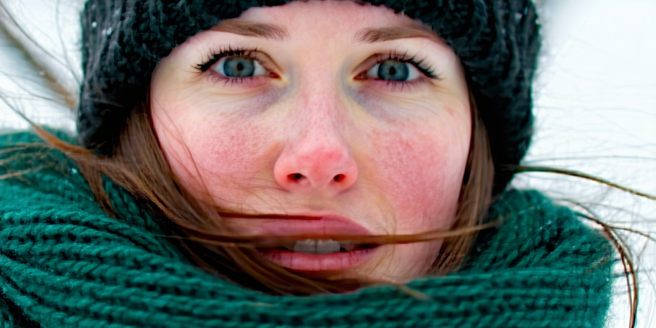
Understanding Cold Fronts and Their Impact on Skin Health
Cold fronts can wreak havoc on your skin, making it crucial to understand their effects. As temperatures drop, humidity levels plummet, leading to dry and often brittle skin. This low humidity causes the skin to lose moisture quickly, disrupting the natural barrier that protects it. Cold winds further strip moisture from exposed areas, compounding dryness. Moreover, indoor heating systems, while providing warmth, reduce air moisture even more, creating a challenging environment for skin health. Understanding how weather changes influence skin can help in taking proactive measures to mitigate potential damage. Adapting skincare routines in response to environmental changes is essential for maintaining healthy, hydrated skin throughout colder months. Recognizing the signs of weather-induced skin stress allows individuals to address issues before they develop into more severe conditions.
Identifying Common Skin Issues During Cold Fronts
During cold fronts, certain skin issues become notably prevalent. Dryness is the most common, characterized by flakiness and a tight feeling. Chapped lips often accompany dry skin, given their sensitivity to cold and dryness. Eczema, a condition where skin patches become inflamed, cracked, and rough, can also worsen. Cold urticaria, presenting as itchy, red welts, can develop upon exposure to cold temperatures. Rosacea flare-ups, leading to redness and irritation, are more frequent as blood vessels constrict in response to cold. Recognizing these conditions early helps in applying appropriate skincare strategies. The skin’s exposure to sudden temperature changes, like transitioning from cold outdoor environments to warm indoor settings, further exacerbates these issues. Being vigilant about these common problems ensures timely adjustments to skincare routines, which can significantly alleviate discomfort.
Essential Skincare Ingredients for Cold Weather
Choosing the right skincare ingredients is vital to protect your skin during cold weather. Hyaluronic acid is a standout, known for its ability to hold moisture, helping plump and hydrate skin effectively. Ceramides replenish the skin barrier, essential for locking in moisture and preventing transepidermal water loss. Glycerin is a humectant that attracts water to the skin’s surface, promoting elasticity and softness. Shea butter and oils, such as jojoba and almond, provide rich emollients that nourish and shield the skin from harsh external elements. Vitamin E acts as an antioxidative element, protecting the skin from environmental damage. Moreover, incorporating ingredients with anti-inflammatory properties like aloe vera or chamomile can soothe irritation caused by cold winds. Utilizing products containing these ingredients supports skin resilience against winter’s drying effects.
Daily Skincare Routine Adjustments for Cold Fronts
Adapting your daily skincare routine to suit cold fronts is essential for skin protection. Begin with a gentle cleanser to avoid stripping natural oils. Follow up with a hydrating toner to balance the skin’s pH levels while adding an extra layer of moisture. A rich, nourishing moisturizer applied while skin is still damp can trap water within the epidermis, maximizing hydration. Include a serum packed with hyaluronic acid or peptides for targeted treatment. Sunscreen remains a daily necessity even in winter, guarding against UV damage. Consider incorporating an overnight mask into your routine, allowing for intensive moisture replenishment while you sleep. Regular exfoliation is important but should be gentle to prevent irritation. Adjusting your skincare regimen to include these steps can significantly enhance skin protection during cold fronts, maintaining its health and suppleness.
Tips for Preventing Dryness and Irritation
Preventing dryness and irritation during cold fronts involves adopting strategic skincare habits. Use a humidifier to add moisture to indoor air, alleviating the drying effects of heaters. Apply moisturizer immediately after showering to lock in skincare benefits. Opt for a fragrance-free, non-irritating moisturizer adaptable to both face and body. Stay hydrated by drinking plenty of water, supporting skin’s hydration from within. Dress warmly, covering sensitive areas like the face and hands with scarfs and gloves, to shield against cold and wind exposure. Lukewarm showers instead of hot ones help prevent the stripping of natural oils from the skin. Be mindful of product formulations, avoiding alcohol-heavy ingredients which can exacerbate dryness. By consciously practicing these preventive steps, the skin’s health and moisture levels can be well-maintained throughout harsher, colder weather conditions.
Choosing the Right Products for Winter Skincare
Selecting appropriate products for winter skincare is fundamental to counteract seasonal challenges. Cream-based cleansers provide necessary moisture, unlike foaming agents that may cause dryness. Look for moisturizers with occlusive agents like petrolatum or dimethicone, which form a protective barrier on the skin. Prioritize fragrance-free options to reduce the risk of irritation. Products with an SPF of at least 30 are still crucial, as UV rays persist year-round. Pay attention to product texture; thicker, balm-like substances offer the best defense against cold winds and low humidity. Incorporating hydrating face masks into the weekly routine can make a significant difference in moisture levels. Regularly update and personalize your skincare collection as weather conditions shift to ensure optimal skin protection and nourishment during winter months.
